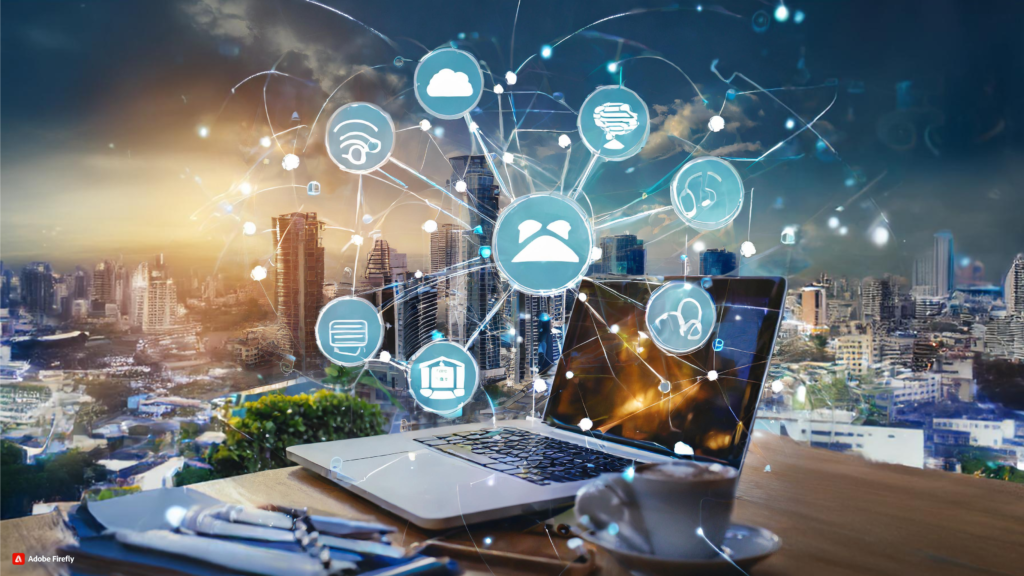
Introduction to ChatGPT
ChatGPT is an advanced AI language model developed by OpenAI, designed to understand and generate human-like text from the input it receives. Its development marks a significant milestone in the field of artificial intelligence, showcasing the remarkable progress in natural language processing (NLP). The primary purpose of ChatGPT is to facilitate seamless interactions between humans and machines, enabling more intuitive and efficient communication across various applications.
The core capability of ChatGPT lies in its ability to comprehend context, generate coherent and contextually relevant responses, and perform a range of language-based tasks. This includes tasks such as answering questions, providing recommendations, creating content, and even engaging in casual conversation. By leveraging vast amounts of data and sophisticated algorithms, ChatGPT has been trained to recognize patterns and nuances in human language, making it a versatile tool for numerous industries.
In today’s AI landscape, the significance of ChatGPT cannot be overstated. It represents a leap forward in the way we interact with technology, offering new possibilities for customer service, education, content creation, and beyond. Businesses can harness the power of ChatGPT to automate routine tasks, improve user engagement, and enhance overall operational efficiency. Meanwhile, individuals can benefit from its ability to provide personalized assistance, making everyday tasks more manageable.
Moreover, ChatGPT’s broad capabilities extend to creative fields, where it can assist writers, artists, and developers by offering suggestions, generating ideas, and even composing original works. The versatility of this AI language model underscores its potential to transform various facets of our daily lives and professional activities.
The GPT Architecture
The Generative Pre-trained Transformer (GPT) architecture forms the backbone of ChatGPT, an advanced AI language model developed by OpenAI. This architecture represents a significant leap in the field of natural language processing (NLP) by leveraging the power of transformers, a novel model introduced in a 2017 paper by Vaswani et al. Transformers have revolutionized NLP by enabling models to handle long-range dependencies and capture intricate patterns in text data.
At its core, the GPT model employs a transformer architecture comprising multiple layers of self-attention mechanisms and feedforward neural networks. These layers work in tandem to analyze and generate human-like text. The self-attention mechanism is particularly noteworthy as it allows the model to weigh the importance of different words in a sentence, facilitating a more nuanced understanding of context and semantics. This capability is crucial for generating coherent and contextually relevant text, making ChatGPT an effective tool for a variety of applications.
The training process of GPT involves two main phases: pre-training and fine-tuning. During pre-training, the model is exposed to a vast and diverse dataset, which includes books, articles, and websites. This extensive dataset enables the model to learn a wide array of linguistic patterns, idiomatic expressions, and factual knowledge. The pre-training phase is unsupervised, meaning the model learns to predict the next word in a sentence without explicit human guidance. This approach allows GPT to develop a broad understanding of language dynamics.
Following pre-training, the model undergoes fine-tuning, a supervised learning process where it is further trained on a narrower dataset with human oversight. Fine-tuning helps refine the model’s capabilities and tailor its responses to specific tasks. For instance, ChatGPT can be fine-tuned to excel in customer support, content creation, or conversational agents, depending on the end-use requirements.
The advancements in transformer technology underpinning GPT have enabled it to achieve remarkable performance in generating human-like text. By leveraging large-scale datasets and powerful computational resources, the GPT architecture continues to push the boundaries of what AI language models can accomplish, making it a cornerstone in the ongoing evolution of artificial intelligence.
Natural Language Processing (NLP) Capabilities
ChatGPT, a state-of-the-art language model developed by OpenAI, leverages advanced natural language processing (NLP) capabilities to understand and generate text that closely mimics human language. This prowess in NLP enables it to engage in interactions that feel natural and conversational, thereby enhancing user experience in a multitude of applications.
At the core of ChatGPT’s NLP capabilities is its ability to parse and interpret context from the input it receives. The model is trained on diverse datasets encompassing various topics, styles, and languages, which allows it to grasp nuances and subtleties in human communication. Consequently, it can generate coherent and contextually appropriate responses, making interactions seamless and intuitive.
One prominent application of ChatGPT’s NLP capabilities is in the realm of customer support. Businesses can deploy ChatGPT-powered chatbots to handle customer inquiries efficiently, providing quick and accurate responses. This not only improves customer satisfaction but also reduces the workload on human support agents, allowing them to focus on more complex issues. For instance, a customer inquiring about the status of their order can receive real-time updates and personalized responses, creating a more engaging and supportive experience.
Another significant application is content creation, where ChatGPT serves as an invaluable tool for writers, marketers, and educators. The model can assist in generating ideas, drafting articles, and even creating detailed reports. Its ability to produce well-structured and contextually relevant content helps streamline the creative process, saving time and effort. For example, a marketer can use ChatGPT to draft compelling copy for a new product launch, ensuring that the content resonates with the target audience.
Moreover, ChatGPT’s NLP capabilities extend to language translation, sentiment analysis, and summarization tasks. It can translate text between languages with a high degree of accuracy, analyze sentiments within text to gauge public opinion, and summarize lengthy documents into concise, easy-to-digest information.
In essence, ChatGPT’s natural language processing capabilities are revolutionizing how we interact with AI, making it an indispensable tool in various real-world scenarios. By understanding and generating human-like text, it bridges the gap between human and machine communication, paving the way for more advanced and intuitive AI-driven solutions.
Versatility in Applications
ChatGPT, developed by OpenAI, is an AI language model renowned for its wide-ranging capabilities, making it an invaluable tool across various industries and personal tasks. One of the most prominent applications of ChatGPT is in answering questions. Whether it’s providing detailed explanations on complex topics or offering quick responses to simpler queries, ChatGPT’s proficiency in understanding and generating human-like text makes it a reliable resource for information retrieval.
In the domain of writing, ChatGPT excels in composing essays and articles. It can assist students and professionals alike by generating well-structured and coherent pieces of writing on virtually any subject. For instance, a student struggling to draft a history essay can leverage ChatGPT to produce a comprehensive outline or even a complete essay, ensuring that the content is logically organized and informative.
When it comes to business communication, ChatGPT proves to be a powerful ally in composing emails. Whether you need to draft a formal business proposal or respond to a customer inquiry, ChatGPT can generate clear, concise, and professional emails. This not only saves time but also helps in maintaining a consistent tone and style in correspondence.
Another notable application is in creating summaries. ChatGPT can efficiently condense lengthy documents into succinct summaries, highlighting the key points and essential information. This capability is particularly useful for professionals who need to quickly grasp the content of reports, research papers, or lengthy articles without delving into the entire text.
Moreover, ChatGPT’s creative prowess is evident in its ability to generate imaginative content. From storytelling and poetry to brainstorming ideas for marketing campaigns, the model can produce unique and engaging content tailored to specific needs. For example, a writer seeking inspiration for a novel can use ChatGPT to generate plot ideas or character descriptions, sparking creativity and enhancing the writing process.
Overall, the versatility of ChatGPT makes it a revolutionary tool, adaptable to a myriad of tasks across different fields and industries. Its ability to understand and generate human-like text empowers users to accomplish a wide range of activities with efficiency and ease.
Contextual Understanding and Coherence
One of the standout features of ChatGPT, OpenAI’s revolutionary AI language model, is its exceptional ability to maintain context within a conversation. This capability ensures that ChatGPT can deliver relevant and coherent responses, even over multiple exchanges. Such a feature is instrumental in making the model effective for sustained interactions, whether in customer service, educational tools, or conversational AI applications.
ChatGPT achieves contextual understanding through its sophisticated architecture, which allows it to remember previous interactions and use that information to inform its responses. For instance, if a user asks about the weather in Paris and follows up with a question about the best time to visit the Eiffel Tower, ChatGPT seamlessly integrates the previous context to provide a coherent answer. This ability to link back to earlier parts of the conversation enhances the user experience, making interactions more fluid and natural.
Several case studies highlight the impressive coherence of ChatGPT in extended conversations. In customer service, for example, ChatGPT can handle intricate queries by threading through multiple context layers. A customer might start by inquiring about the status of their order and then pivot to questions about return policies. ChatGPT navigates these shifts without losing track of the overarching conversation, ensuring the customer receives timely and accurate information.
In educational settings, ChatGPT’s contextual prowess is equally valuable. Suppose a student is learning about World War II and engages in a dialogue spanning various aspects like key events, significant figures, and geopolitical impacts. ChatGPT can maintain the thread of conversation across these topics, providing coherent and contextually relevant information that aids in the learning process.
Ultimately, the contextual understanding and coherence of ChatGPT set it apart from many other AI language models. By maintaining an awareness of the ongoing conversation, ChatGPT delivers an interaction experience that feels more human-like, engaging, and useful. This capability not only enhances user satisfaction but also broadens the applicability of ChatGPT across different domains and industries.
Customization and User Guidance
One of the standout features of ChatGPT is its ability to be customized according to user requirements. This flexibility allows users to tailor their interactions with the AI to achieve specific outcomes. By providing precise instructions or prompts, users can guide ChatGPT to generate responses that align closely with their expectations.
Customization can be achieved through various methods, such as specifying the tone, style, or format of the output. For instance, a user can instruct ChatGPT to draft a formal business email or a casual social media post. By defining these parameters, the AI adjusts its responses, ensuring that the output is appropriate for the intended context.
Another aspect of user guidance involves setting boundaries for the content generated by ChatGPT. Users can instruct the AI to avoid certain topics or adhere to specific guidelines. This is particularly useful in professional settings where maintaining a particular standard is crucial. For example, in a customer service scenario, ChatGPT can be guided to provide support within the confines of company policies and procedures, thus ensuring consistency and reliability.
Real-world applications of customization are vast and varied. In educational environments, instructors can use ChatGPT to create tailored lesson plans or provide personalized tutoring sessions. By specifying the subject matter and the educational level, the AI can generate content that meets the specific needs of students. Similarly, in content creation, writers can leverage ChatGPT to draft articles, blogs, or scripts that match their unique style and voice.
Overall, the ability to customize and guide ChatGPT enhances its usability across different domains. By giving users the tools to direct the AI’s output, OpenAI enables a more dynamic and interactive experience, making ChatGPT a valuable asset in both personal and professional contexts.
Knowledge Base and Limitations
ChatGPT, developed by OpenAI, is a sophisticated AI language model renowned for its extensive knowledge base. Trained on a diverse and large-scale dataset, ChatGPT encompasses a broad spectrum of topics, from historical events and scientific principles to cultural nuances and everyday trivia. This comprehensive training enables the model to generate informative and contextually relevant responses, making it a valuable tool across various applications, from customer service to educational assistance.
However, despite its impressive capabilities, ChatGPT is not without limitations. One of the primary constraints is its knowledge cutoff date. As of now, the model’s knowledge extends only up to September 2021, with periodic updates bringing it up to July 2023. This means that any events, discoveries, or data generated beyond this period are not within the model’s purview. Users must be aware of this temporal limitation when seeking information on recent developments or emerging trends.
Additionally, the model’s responses are entirely dependent on the data it was trained on. While this dataset is extensive, it is not exhaustive. There may be gaps in knowledge, and the information provided might lack the depth or specificity required for certain specialized inquiries. Furthermore, the model does not have the capability to verify the accuracy or current relevance of the information it generates. As a result, while ChatGPT can serve as a helpful preliminary resource, it is crucial for users to cross-check responses and validate facts through reliable and up-to-date sources.
Understanding these limitations is essential for effectively utilizing ChatGPT. Acknowledging its strengths in providing broad-based knowledge and recognizing the necessity of verification can empower users to make the most of this revolutionary AI language model while mitigating the risks associated with potential misinformation.
Accessibility and Integration
One of the most compelling aspects of ChatGPT is its remarkable accessibility across diverse platforms and interfaces. OpenAI has designed ChatGPT to be easily integrated into a wide array of digital environments, making it a versatile tool for various applications. Whether you’re a developer looking to enhance your website’s user experience or a business aiming to improve customer support through an application, ChatGPT offers seamless integration capabilities.
Integrating ChatGPT into websites can be as straightforward as embedding a chatbot widget. This allows visitors to interact with the AI directly, receiving real-time responses to their queries. For instance, e-commerce platforms often utilize ChatGPT to assist customers in finding products, answering frequently asked questions, and even providing personalized recommendations. This not only enhances the user experience but also can lead to increased sales and customer satisfaction.
Applications, both web-based and mobile, can also benefit significantly from ChatGPT’s integration. For example, customer service apps can leverage ChatGPT to handle routine inquiries, freeing up human agents to focus on more complex issues. This can result in faster response times and more efficient service overall. Additionally, educational apps are utilizing ChatGPT to provide instant tutoring, explanations, and interactive learning experiences, making education more accessible and engaging for users worldwide.
Moreover, ChatGPT’s API provides developers with the tools they need to embed the model into their existing systems without extensive reconfiguration. This ease of integration means that businesses can quickly deploy ChatGPT across various channels, including social media platforms, internal communication tools, and even voice-activated assistants. The flexibility of ChatGPT ensures that it can adapt to the specific needs and workflows of any organization.
Several successful integrations highlight the benefits of employing ChatGPT. Companies have reported significant improvements in customer engagement and operational efficiency. For instance, a financial services firm integrated ChatGPT into its client interface, resulting in a 40% reduction in customer service response times. Similarly, an online learning platform saw a 30% increase in user retention after incorporating ChatGPT to provide instant feedback and support to learners.
In essence, the accessibility and integration capabilities of ChatGPT make it an invaluable asset for enhancing digital interactions. By leveraging this powerful AI language model, organizations can provide superior user experiences, streamline operations, and ultimately achieve their business objectives more effectively.



More Stories
knowledgeable fact about 5G Network